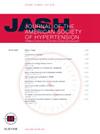Comparison of laboratory and ambulatory measures of central blood pressure and pulse wave reflection: hitting the target or missing the mark?
Abstract
Prior studies demonstrating clinical significance of noninvasive estimates of central blood pressure (BP) and pulse wave reflection have relied primarily on discrete resting measures. The aim of this study was to compare central BP and pulse wave reflection measures sampled during a single resting laboratory visit against those obtained under ambulatory conditions. The secondary aim was to investigate the reproducibility of ambulatory central BP and pulse wave reflection measurements. Forty healthy participants (21 males; 24 ± 3 years) completed three measurements of brachial artery pulse wave analysis (Oscar 2 with SphygmoCor Inside) in the laboratory followed by 24 hours of ambulatory monitoring. Seventeen participants repeated the 24-hour ambulatory monitoring visit after at least 1 week. Ambulatory measures were divided into daytime (9 AM–9 PM), nighttime (1 AM–6 AM), and 24-hour periods. Compared with laboratory measurements, central systolic BP, augmentation pressure, and augmentation index (with and without heart rate normalization) were higher (all P < .01) during daytime and 24-hour periods but lower during the nighttime period (all P < .001). The drop in nighttime brachial systolic BP was larger than central systolic pressure (Δ −20 ± 6 vs. −15 ± 6 mm Hg; P < .0001). Repeat ambulatory measurements of central BP and pulse wave reflection displayed good-to-excellent intraclass correlation coefficients (r = 0.58–0.86; all P < .01), although measures of pulse wave reflection had higher coefficients of variation (14%–41%). The results highlight absolute differences in central BP and pulse wave reflection between discrete laboratory and ambulatory conditions. The use of ambulatory measures of central BP and pulse wave reflection warrant further investigation for clinical prognostic value.

 求助内容:
求助内容: 应助结果提醒方式:
应助结果提醒方式:


